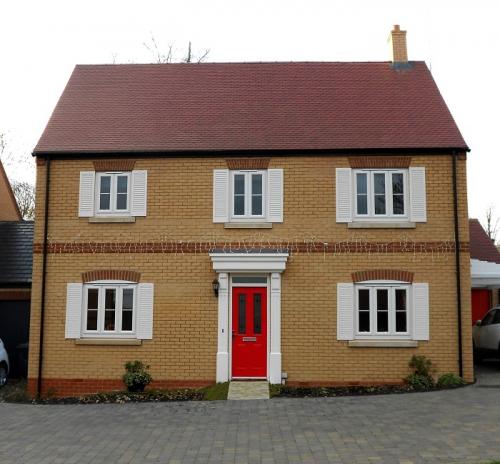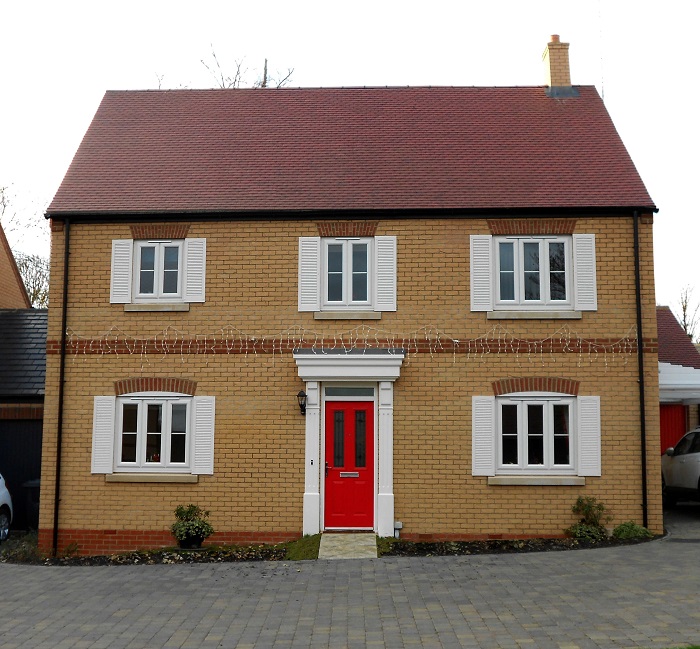The Historical Significance of Shutters in British Architecture

When you explore the rich tapestry of British architecture, one element that consistently stands out is the use of shutters.
From quaint country cottages to grand Victorian townhouses, shutters have been a defining feature of British homes for centuries.
But these shutters are more than just decorative; they hold a significant place in the architectural and cultural history of the UK.
In this blog, we'll delve into the historical significance of shutters in British architecture, exploring how they've evolved and what they've come to represent in the landscape of British design.

The Origins and Evolution
Shutters first appeared in British architecture during the Tudor period (1485-1603). Initially, they were practical rather than aesthetic, designed to provide security and protection from the elements.
Made from solid wood, these early shutters were hinged and could be closed from the inside.
As glass windows were a luxury few could afford, shutters also played a crucial role in insulation.
As time progressed, particularly into the Georgian and Victorian eras, shutters evolved to become more decorative.
The introduction of glass windows didn't diminish their use; instead, it transformed them. Shutters became a symbol of elegance and refinement in homes.
The 18th and 19th centuries saw the rise of panelled and louvered styles, which allowed for ventilation and light control while still providing privacy.
Symbolism in Architecture
When you gaze upon the historic buildings of Britain, the shutters adorning them are not just mere window dressings.
They are emblematic of a deeper narrative woven into the fabric of British architecture.
These shutters, which you might find on a classic townhouse in London or a centuries-old cottage in the countryside, are more than functional elements; they are storytellers of an era gone by.
They embody a fusion of practicality and aesthetic charm, a signature trait of British design that has stood the test of time.
In the heart of London, where the architectural landscape is a tapestry of history and modernity, window shutters interior in London serve as a bridge between the past and the present.
Walking through historical districts, you'll notice how shutters are meticulously preserved, almost like cherished relics.
They mirror the architectural style and epoch of each building, offering a glimpse into the lives of those who dwelled within these walls centuries ago.
These shutter blinds are not just window treatments; they are a testament to the evolving architectural trends that have shaped the city over the centuries.
Regional Variations
As you journey across the diverse regions of the UK, you'll discover that shutters are as varied as the landscapes themselves.
Each region has cultivated its unique style, influenced by the local climate, available materials, and prevailing architectural trends.
In coastal areas, for instance, shutters are more than just aesthetic additions.
They are robust guardians against the relentless coastal winds and the corrosive salt air.
Here, shutters are built to endure, reflecting the resilience of the communities that live by the sea.
In contrast, urban areas, particularly in affluent neighborhoods, showcase shutters as symbols of elegance and status.
In these settings, shutters are not just practical elements but also decorative statements.
They often feature intricate designs and are made from the finest materials, reflecting the wealth and taste of the homeowners.
These shutter blinds are a nod to the homeowner's discerning eye for style and luxury, making them a coveted feature in upscale residences.
In every corner of the UK, shutters tell a unique story.
They are a reflection of the region's character, weathered by time and shaped by the hands of those who crafted them.
Whether it's the rugged, functional shutters of the coast or the ornate, decorative shutters of the city, each style speaks to the heart of British architectural heritage.
Modern Revival
Today, there's a renewed interest in shutters, both in restoration projects and new builds.
They are appreciated not only for their historical significance but also for their practical benefits, such as energy efficiency, light control, and privacy.
Modern technology has allowed for the creation of shutters that respect historical designs while incorporating contemporary functionality, bridging the gap between the past and the present.
Conclusion
The history of shutters in British architecture is a fascinating journey through time.
These functional yet decorative elements have stood the test of time, adapting and evolving while maintaining their core significance.
They are a testament to the enduring nature of British design, blending practicality with aesthetic appeal.
As we continue to appreciate and preserve these historical elements, shutters remain a beloved and integral part of the UK's architectural heritage.









Comments